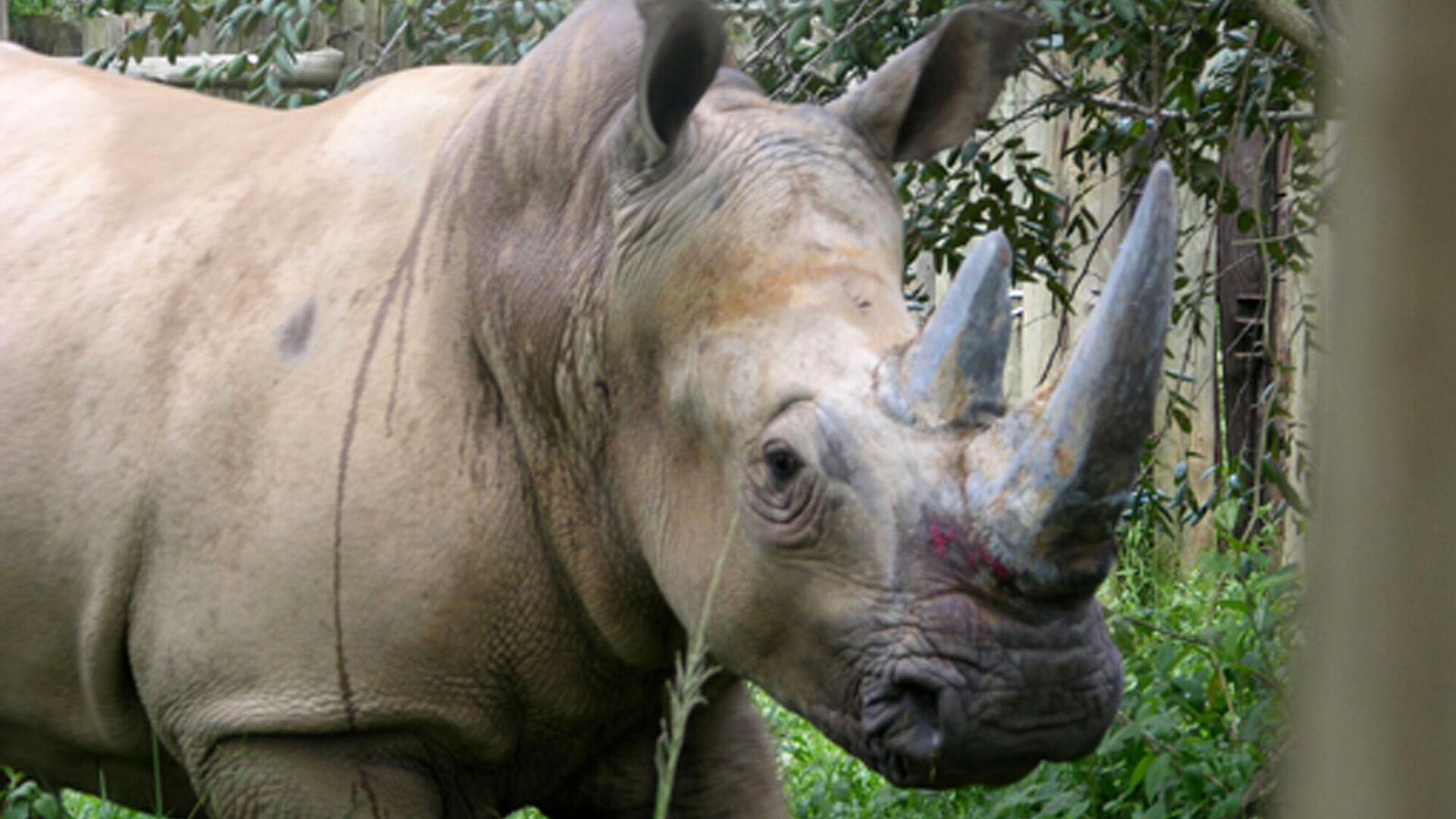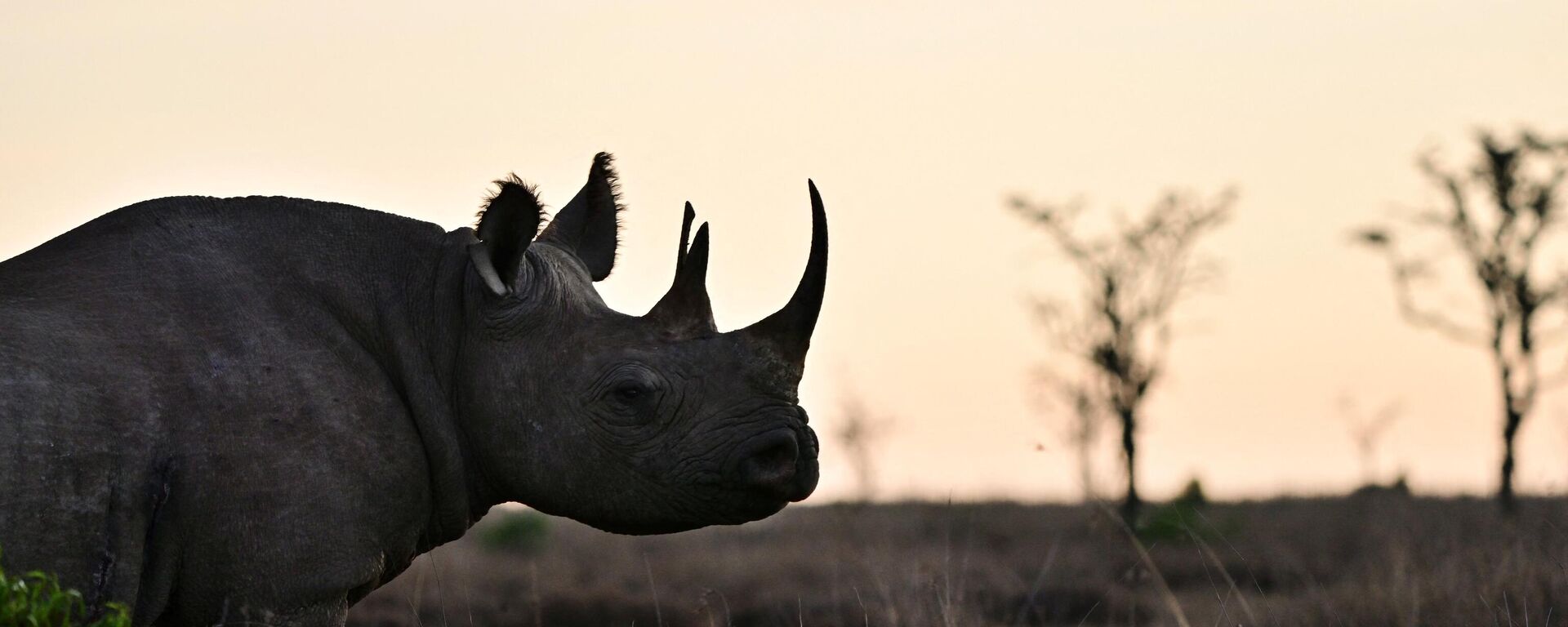https://en.sputniknews.africa/20240401/uganda-reintroducing-white-rhinos-in-west-nile-reserve-to-preserve-biodiversity-and-boost-tourism-1065871470.html
Uganda Reintroducing White Rhinos in West Nile Reserve to Preserve Biodiversity and Boost Tourism
Uganda Reintroducing White Rhinos in West Nile Reserve to Preserve Biodiversity and Boost Tourism
Sputnik Africa
Last November, the Uganda Wildlife Authority presented a detailed plan outlining the steps to bring back the white rhinoceros to Ajai Wildlife Reserve, its... 01.04.2024, Sputnik Africa
2024-04-01T19:03+0200
2024-04-01T19:03+0200
2024-04-02T09:14+0200
uganda
sub-saharan africa
east africa
rhino
animals' protection
animals
kenya
environment
tourism
https://cdn1.img.sputniknews.africa/img/07e8/04/01/1065874651_0:187:2000:1312_1920x0_80_0_0_00be9d7548e77d90a456352901192480.jpg
The Uganda Wildlife Authority (UWA) began the process of reintroducing white rhinos to Ajai Wildlife Reserve, located in the West Nile region in the north-west of the country, the local media revealed on Monday.This follows the successful two-day relocation of 200 kobs and 50 buffaloes to the reserve, which the UWA finished last Friday. The purpose of the exercise is to clear the area of overgrown vegetation and facilitate the repopulation of the wildlife reserve prior to the introduction of Southern White Rhinoceros, the media reported.Moreover, the reintroduction of kobs and buffaloes enhances the diversity of the reserve's itinerary for tourists.Furthermore, the local media also found out that transferring rhinos to Ajai Wildlife Reserve will alleviate the already overburdened Ziwa Rhino Sanctuary, which is located in central Uganda. The sanctuary currently exceeds its maximum capacity of 40 rhinos, so excess animals have to be relocated to other areas.But why Ajai Wildlife Reserve? Five years ago, the UWA conducted a feasibility study to determine whether rhinos could survive in the reserve. The study identified it, along with another national part, as the most suitable alternative preserve to house the animals.Aside from that, the squaring of the reserve will also boost tourism in the West Nile, the region with the fewest attractions, Hangi reportedly said.Furthermore, Sam Mwandha, the UWA executive director, highlighted the importance of the translocation exercise in promoting sustainable tourism and community involvement, adding that the translocation initiative demonstrates the UWA's dedication to preserving biodiversity and restoring ecosystem.Uganda's neighbor, Kenya, has also put effort into safeguarding rhinos. In mid-January, the Kenya Wildlife Service began the relocation of 21 black rhinos to the Loisaba Conservancy, which will give the animals more space to breed.Moreover, the East African country is also working to increase the population of another rhino species, the southern white rhino, and continues fighting poaching.
https://en.sputniknews.africa/20240117/kenya-launches-relocation-of-21-endangered-black-rhinos-to-new-conservancy-for-breeding-1064659629.html
uganda
east africa
kenya
Sputnik Africa
feedback@sputniknews.com
+74956456601
MIA „Rossiya Segodnya“
2024
Christina Glazkova
https://cdn1.img.sputniknews.africa/img/07e7/0b/07/1063380906_0:0:673:674_100x100_80_0_0_79628b4d0cd9f29291a57aa13bbf9e7a.jpg
Christina Glazkova
https://cdn1.img.sputniknews.africa/img/07e7/0b/07/1063380906_0:0:673:674_100x100_80_0_0_79628b4d0cd9f29291a57aa13bbf9e7a.jpg
News
en_EN
Sputnik Africa
feedback@sputniknews.com
+74956456601
MIA „Rossiya Segodnya“
Sputnik Africa
feedback@sputniknews.com
+74956456601
MIA „Rossiya Segodnya“
Christina Glazkova
https://cdn1.img.sputniknews.africa/img/07e7/0b/07/1063380906_0:0:673:674_100x100_80_0_0_79628b4d0cd9f29291a57aa13bbf9e7a.jpg
uganda, east africa, rhino, animals' protection, animals, kenya, environment, tourism
uganda, east africa, rhino, animals' protection, animals, kenya, environment, tourism
Uganda Reintroducing White Rhinos in West Nile Reserve to Preserve Biodiversity and Boost Tourism
19:03 01.04.2024 (Updated: 09:14 02.04.2024) Christina Glazkova
Writer / Editor
Last November, the Uganda Wildlife Authority presented a detailed plan outlining the steps to bring back the white rhinoceros to Ajai Wildlife Reserve, its native habitat, with the goal of completing the reintroduction by 2025.
The Uganda Wildlife Authority (UWA) began the process of reintroducing white rhinos to Ajai Wildlife Reserve, located in the West
Nile region in the north-west of the country, the local media revealed on Monday.
This follows the successful two-day relocation of 200 kobs and 50 buffaloes to the reserve, which the UWA
finished last Friday. The purpose of the exercise is to clear the area of overgrown vegetation and facilitate the repopulation of the wildlife reserve prior to the introduction of Southern White Rhinoceros, the media reported.
“By reintroducing common species such as kobs and buffaloes, UWA aims to enhance the reserve’s capacity to manage diverse wildlife populations effectively. Rhinoceros are grazers; they eat the grass, but the kobs and buffaloes we have taken there eat everything, including tree branches,” Bashir Hangi, the UWA spokesman said, as cited by the media.
Moreover, the reintroduction of kobs and buffaloes enhances the diversity of the reserve's itinerary for
tourists.
“We don’t want to keep the rhinos there alone; we want a variety of animals if we are to improve the tourism of the area. We cannot look at rhinoceros alone,” Hangi reportedly added.
Furthermore, the local media also found out that transferring rhinos to Ajai Wildlife Reserve will alleviate the already overburdened Ziwa Rhino Sanctuary, which is located in central
Uganda. The sanctuary currently exceeds its maximum capacity of 40 rhinos, so excess animals have to be relocated to other areas.
“We want to keep Ziwa as a breeding space. So, we shall not take away all the rhinos; we shall leave behind some so that they can continue breeding. Once the young ones are grown, we distribute them to other bigger spaces,” Hangi was quoted as saying.
But why Ajai Wildlife Reserve? Five years ago, the UWA conducted a feasibility study to determine
whether rhinos could survive in the reserve. The study identified it, along with another national part, as the most suitable alternative preserve to house the animals.
Aside from that, the squaring of the reserve will also boost tourism in the West Nile, the region with the fewest attractions, Hangi reportedly said.
Furthermore, Sam Mwandha, the UWA executive director, highlighted the importance of the translocation exercise in promoting sustainable tourism and community involvement, adding that the translocation initiative demonstrates the UWA's dedication to preserving biodiversity and restoring
ecosystem.
“The translocation of wildlife to Ajai Wildlife Reserve is a testament to our dedication to responsible tourism and inclusive conservation practices. This initiative will not only elevate the tourism potential of the reserve but also ensure equitable benefits for local communities through revenue-sharing mechanisms,” he reportedly said.
Uganda's neighbor, Kenya, has also put effort into safeguarding rhinos. In mid-January, the Kenya Wildlife Service began the relocation of 21 black rhinos to the Loisaba Conservancy, which will give the animals more space to breed.
Moreover, the East African country is also working to increase the population of another rhino species, the southern white rhino, and continues fighting
poaching.



